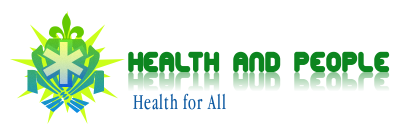In some circles meat is king when it comes to high-protein eating (just ask any Paleo dieter), but animal foods are not the only way to get this muscle-building nutrient. Plant proteins such as beans, whole grains, fruit, nuts, and seeds have many benefits: In addition to offering up lots of digestion-helping fiber, they may help lower your risk of heart disease and Type 2 diabetes. But you may wonder how much protein you’re getting from these different varieties. Not all are equal providers: A cup of raw broccoli, for instance, contains about two grams protein, while one ounce of almonds has six grams protein. Three ounces of firm tofu offers about eight grams protein, or 14 to 17 percent of your daily need.
Proteins in food provide amino acids, which the body uses as building blocks for other proteins—such as muscle and the collagen that holds your skin together. Food proteins can contain up to 20 amino acids, and the liver is able to produce all but nine of these. The remaining 11 are essential, meaning they must come from food sources. Without them, the body’s cells will take apart their own proteins to secure the missing amino acids—eventually degrading the body’s muscles and organs.
When a protein contains all the essential amino acids—as is the case with animal proteins and a small set of plant proteins including soy (edamame, tofu, tempeh, soy milk and soy nuts), quinoa, amaranth, chia, and hemp—it’s known as a complete protein. When it doesn’t, it’s an incomplete protein, as is the case with other plant proteins such as beans and nuts.
While one plant protein may be deficient in an amino acid or two, another plant protein may balance it out. For example, legumes (such as beans) offer isoleucine and lysine but are low in methionine and tryptophan—all essential amino acids. Grains (such as rice) contain the opposite balance of nutrients. You don’t need to eat these complementary proteins together at one meal, rather in the same day. “A person doesn’t have to be concerned whether every bite of protein is complete,” says Keri Gans, R.D., a dietitian in New York City and author of The Small Change Diet. “Rather, consume a wide variety of foods daily and you will be sure to eat all your amino acids.” Also be watchful that you’re eating a protein source with every meal, which will help assure that you’re getting the amino acids you need.
If you’re not familiar with plant proteins, start slowly. “Have one meal a week that’s totally plant-based,” suggests Gans. “For example, join the Meatless Monday crusade. Every Monday, create a meal featuring plant-based protein. Swap out the beef burger and try a veggie burger for dinner, or for lunch go with a hummus and veggie wrap.”
Here are more ideas for getting started, featuring the five complete plant proteins:
Edamame (17 grams protein per cup)
Soy beans are an excellent protein source and contain 11 to 13 percent of your daily need for immunity-helping vitamin C. Plus, eating soy daily can slightly lower “bad” LDL cholesterol.
Prepare it: Heat and lightly salt as a snack; add to a cold pasta salad or a stir-fry; puree in a dip with avocado, lemon juice and olive oil; make Sonima’s edamame and quionoa burgers.
Hemp seeds (10 grams protein per ounce)
Hemp seeds are an excellent source of the minerals magnesium and zinc, both important for immunity.
Prepare it: Use as a salad, pasta, or stir-fry topper; add a handful to a smoothie (blend in or sprinkle on)
Amaranth (9 grams protein per cup)
Each grain of amaranth consists of between five and nine percent oil. Phytosterols are present in this oil and are known for their cholesterol-lowering properties. A common variety of amaranth grown in the U.S. has the highest levels of these phytosterols.
Prepare it: Cook in a pilaf; pop in a dry, hot skillet while stirring with a wooden spoon and eat in lieu of popcorn or use in place of croutons on a salad
Quinoa (8 grams protein per cup)
This grain-like seed is a good source of satiating fiber—and it provides 7 percent of your daily need for potassium, which may help control blood pressure.
Prepare it: Add to soup; use as a stuffing for roasted bell peppers; chill and mix into a salad; mix with sweet potatoes and bake into quinoa cakes topped with a salad.
Chia seeds (5 grams protein per ounce)
When the seeds become wet, their fiber forms a gel and expands. This gel helps keep you fuller for longer and may also prevent constipation. Just one ounce of these nutty brown or black seeds provides 26 to 39 percent of your daily fiber need.
Prepare it: Mix into yogurt or oatmeal; make a pudding by soaking in almond or hemp milk for about 20 minutes, then sweetening with honey or agave
More From Sonima.com
Try a Free Online Yoga Class at Sonima
Understanding the Science and Controversy of GMOs
Green Goddess Pizza with Fresh Peas & Feta
The Inquiry and Practice of Advanced Asana
from Health News / Tips & Trends / Celebrity Health http://ift.tt/1LOVvCq
